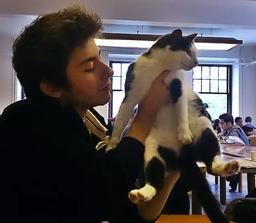Causative suffixes are attached to intransitive verbs to make them transitive.
They also attach to transitive verbs to indicate further involvement of another object/agent. In this case, this other agent is an indirect object receiving a dative suffix, since the original verb already took a direct object.
| I made my aunt buy leather from the market. | Teyzeme çarşıdan deri aldırdım. |
Unfortunately there are six forms of this suffix, and the rules for using them are not entirely regular. The suffixes are:
-Dİr : öldürmek (to kill), aldırmak (to make someone buy)
-t : kısaltmak (to make something shorter), tanıtmak (to introduce someone or something)
-İt : sapıtmak (to go haywire), korkutmak (to scare someone)
-İr : bitirmek (to end something), düşürmek (to drop something)
-Ar : çıkarmak (to extract something)
-Art : çökertmek (to make something collapse)
The causative suffix is -t for all polysyllabic verbs that end in an r or an l, and there are about 30 monosyllabic verbs for which the suffix is either -İt, -İr, -Ar or -Art.
All other verbs take -Dİr as the causative suffix, which is the most common form.
Additionaly, there are some verbs that don't follow any of the six rules above, the most common of which you can see below.
| Turkish Intransitive | English | Turkish Transitive | English |
|---|---|---|---|
| girmek | to enter | sokmak | to insert, to make it enter |
| gelmek | to come | getirmek | to bring, to make it come |
| gitmek | to go | götürmek | to take it (away from the speaker) |
| kalkmak | to rise up | kaldırmak | to lift, to raise |

